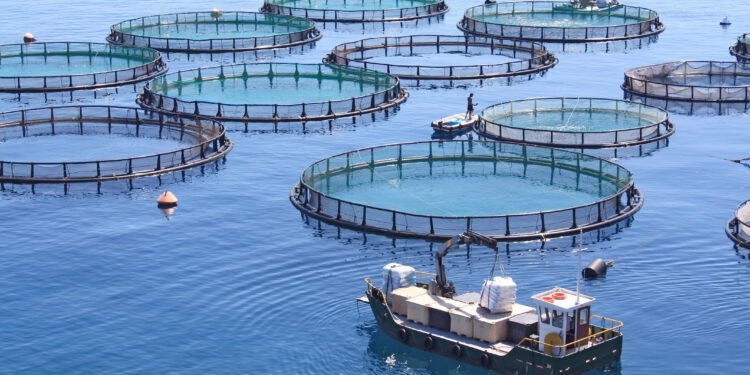Saudi Arabia has significantly increased its fisheries and aquaculture production, achieving a 55.56% rise in 2023, with output surpassing 140,000 tonnes. This growth reflects the Kingdom’s dedication to food self-sufficiency and sustainable development.
The Ministry of Environment, Water, and Agriculture (MEWA) reported record-breaking results in both saltwater and inland aquaculture, jumping from 90,000 tonnes in 2021. Marine fisheries in the Red Sea and Arabian Gulf contributed 74,700 tonnes, a 16.2% increase over the previous year, bringing total production to 214,000 tonnes.
The National Fisheries Development Program aims to enhance the economic impact of fisheries and aquaculture by optimizing resources, boosting GDP contributions, achieving seafood self-sufficiency, and diversifying income.
Since its inception in 1982, aquaculture has evolved, with Saudi Arabia emerging as a major exporter of white shrimp. The Kingdom targets producing 600,000 tonnes of fish by 2030, encouraging local investments and job creation.
To further these goals, the ministry is implementing strategies to improve self-sufficiency in fish products, elevate quality standards, introduce new species for farming, and attract investments. The aim is to increase individual fish consumption to 13 kg annually.
Key species produced include Nile tilapia, sea bass, sea bream, and shrimp. The sector’s rapid growth is fueled by strategic development and increased investments in marine and inland aquaculture projects.
Efforts to promote modern technologies, streamline investment procedures, and support small-scale fishermen are part of the ministry’s strategy to empower the private sector and strengthen agriculture’s role in the national economy, aligning with Saudi Vision 2030.
Annually, Saudi Arabia exports 59,844 tonnes of fish and shrimp, valued at SR1.1 billion ($293 million), to global markets, showcasing its growing prominence in the seafood industry.









